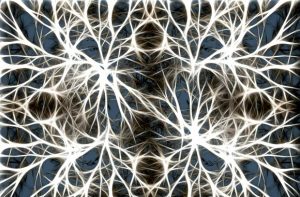Attention Disorders
“Attention disorders are a type of disorders in which there are changes in the pattern of behavior seen in children of school-going age.”
Attention disorders may also be found in adults too. These attention disorders are of two types
- Attention Deficit Disorder ADD.
- Attention Deficit Hyperactivity Disorder ADHD.
Cause
In children, this disease manifests itself as a result of cellular toxicity that a baby experiences. This may be due to some metals or chemicals which may interfere with normal cellular function and repair. Other causes may be malnutrition and poor bowel habits. Due to a disturbance in bowel habits, accumulated toxins lead to brain damage. So poor nutrition, parasitic infection, abnormal bowel habits, and toxicity may lead to this disorder in children.
Signs and Symptoms
Attention deficit disorder (ADD): The sign and symptoms of this condition in children include derailing children easily by some stimuli, forgetting things at home necessary for school, they find themselves in difficulty performing some important work, don’t seem interested in daily activities but forgetful about them, cannot follow the instruction properly, fail to perform their homework’s.
Adults with this disorder are very lazy, leave their work for tomorrow, could not take initiative steps, detract easily from performing multi-tasks, have poor concentration, and can not work properly, especially which require thorough concentration and attention.
Attention deficit hyperactivity disorder (ADHD): These children are very active. They cannot sit silently in peace. They are hyperkinetic. They run and jump exclusively and are very talkative and impulsive. They are impatient regarding every task and could not sustain themselves.
Adults also show signs of impatience, irritability, and hyperactivity. They work a lot without getting fatigued, are very much active in physical activities, and easily lose their temper. They easily get bored as well.
Underlying Pathology
Our frontal lobe is involved in controlling our emotions, talking, thinking, and different activities. It as a whole controls our personality. Any damage to this area can lead to such problems as attention disorders and changes in social behavior.
In attention disorder, there seems hyperfunctioning of the frontal lobe. So actually pathology lies in their excessive take-up and quick clearance. Both dopamine and norepinephrine transporters become highly active and result in active uptake of both these neurotransmitters and remove them from the site.
Laboratory Diagnosis
It involves complete history as well as physical examination. Childhood history is a compelling one to make a diagnosis of this disease. Complete blood count, level, and other tests like thyroid hormone level tests are also done.
Treatment*
Attention disorder is usually treated with dextroamphetamine and methylphenidate which is an amphetamine derivative. This drug acts by inhibiting the monoamine oxidase and leads to high levels of catecholamine in synaptic spaces. The behavioral effects occur due to dopamine and norepinephrine whose release is enhanced by amphetamine and its derivatives.
Children should be given proper diets full of nutrition. If he has a problem with the digestive system, it should be addressed immediately and he should be vaccinated and should be kept neat and clean for being free of infections.

ADD – Attention Deficit Disorder
Attention Deficit Disorder ADD is a behavioral disorder seen in children. Some young children are hyperkinetic and cannot be involved in any activity for longer than a few minutes. Some show laziness while others show hyperactivity. But both do not show consistency in performing any work. These children grow with this disorder to adolescence.
Causes
These include cellular toxicity at a young age, an infant born being infected from parasites or other infections from the mother, mal-nutrition or problems in the excretory system that leads to the accumulation of toxic products, and brain damage. A woman who is pregnant and a smoker, the child has a high risk of having this disease. The nicotine present in the smoke can produce hypoxia in the fetus in the intrauterine life.
Signs and Symptoms
The sign and symptoms of this condition in children include derailing children easily by some stimuli, forgetting things at home necessary for school, finding it difficult in performing some important work, don’t seem interested in daily activities but forgetful about them, cannot follow the instruction properly, fail to perform their homework’s.
Adults with this disorder are very lazy, leave their work for tomorrow, could not take initiative steps, detract easily from performing multi-tasks, have poor concentration, and can not work properly, especially which require thorough concentration and attention.
Children which grow into adolescence also show these symptoms in their adult stage. In adults, this disorder is also accompanied by depression and anxiety states. This is also accompanied by bipolar disorder, mood disorder, obsessive-compulsive disorders, personality disorders, etc
Etiology
Although the exact cause is unknown, it is seemed due to genetic mutations which affect the transporter of dopamine. As a result, decreased levels of this neurotransmitter in the brain lead to this behavioral condition.
The problem with the function of the frontal lobe is also thought to cause this disease since the frontal lobe is responsible for our behavioral patterns. There has been the involvement of other areas of the brain in causing this disease such as the cerebellum, caudate and putamen, dorsal cingulate cortex, and lateral prefrontal cortex.
Lab Diagnose
It is based on a complete history, physical examination, and lab investigations. CT scan or MRI can also help detect any change in the brain due to this disorder.
Treatment*
The standard treatment for this disease is the use of amphetamine and its derivatives. These include dextroamphetamine and methylphenidate. These drugs can improve attention and alleviate many of the behavioral problems associated with this syndrome. They also reduce hyperkinesias. They work by blocking dopamine reuptake.
Care Your Child
If you want your child to be healthy and free of disease, take a lot of his care. During pregnancy avoid smoking and alcohol intake. Keep your children healthy and dirt free. Feed him properly with a balanced diet.

ADHD – Attention Deficit Hyperactivity Disorder
Attention deficit hyperactivity disorder ADHD is one of the most common disorders of childhood and a child who is suffering from this can enter with it in their adolescence and adulthood.
Symptoms and Signs: These children are either restless or silent, very active or lazy, cannot concentrate for long, forgets about things, cannot sit with ease anywhere, cannot wait for their turn, are very impatient, do daydreaming, and easily be confused, talk non-stop and non-sense, could not follow the instructions properly and cannot transfer the information as it is and they are not good in studies as well.
Types
There are three types of this disorder, namely:
- Predominantly hyperactive impulse
- Combined hyperactive and impulsive disorder
- Predominantly inattentive disorder.
Causes
There are various causes of this disorder. The most important is cellular toxicity at a very young age which is caused by damage to the tissues by certain chemicals or by other trauma. Those babies born to infected mothers from parasites or other infections are also prone to this disease. Malnutrition or problem in the excretory system that leads to the accumulation of toxic products and brain damage is also the major cause.
A woman who is pregnant and she smokes regularly, her baby has a high risk of being suffered from this disorder which is caused by the presence of nicotine in the smoke that can produce hypoxia in the fetus’s intrauterine life.
This disease results from mutations in the genes present on dopamine transporters, therefore, decreasing its level in the brain and which produces this disease. It is also linked with the dysfunctional frontal lobe.
Diagnosis
If your children are not doing well in their studies at school, don’t listen to you and your teacher, are always in motion and cannot concentrate anywhere properly, you find him being depressed, and shows some kind of seizures, you should go to a doctor. He will then make further investigations. MRI will help check any brain pathology.
Treatment*
The gold standard treatment for Attention Deficit Hyperactivity Disorder ADHD is the drug amphetamine and its derivatives which include dextroamphetamine and methylphenidate. These drugs lead to improving attention and are also helpful in alleviating many of the behavioral problems associated with this disorder. Both drugs also lessen hyperkinesias. These are dopamine reuptake inhibitors.
One new drug, now available is Atomoxetine. It is a non-stimulant drug and approved for Attention Deficit Hyperactivity Disorder ADHD in both children and adults. This drug works by inhibiting norepinephrine reuptake.
Psychotherapy
Nowadays different kinds of psychotherapies are used for Attention Disorders. Behavioral therapy works by providing help to a child in changing his behavior. It may involve practical assistance as well, such as asking them to complete homework by giving them help or working on them to overcome their emotional difficulties.
Behavioral therapy also enables a child to learn how to monitor his behavior and attitude. Rewarding him and praising him for doing all these things is one of the other aims of behavioral therapy on which it works.




